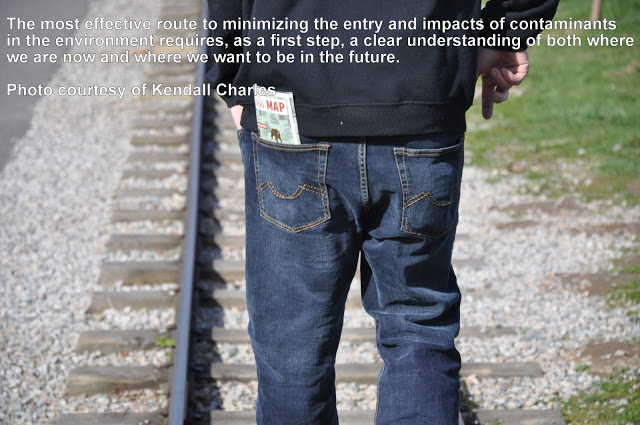Agencies at all levels of government work both individually and jointly to reduce risks to human and ecosystem health. Existing programs include activities such as monitoring the release and presence of environmental contaminants, developing and enforcing regulatory tools, and creating materials to support voluntary programs and public education.
Many successful programs have been undertaken in partnership with industry, non-government organizations, and community groups. As a result, significant reductions in releases of contaminants from a wide range of sources in the Georgia Basin have been achieved. The importance of building on the successes of past initiatives when planning future programs is ever more important in light of the projections for continuing rapid population growth in communities within the Georgia Basin.

In recent decades, added pressure has been placed on regulatory agencies to address sources of pollution. The general public, the fishing industry, First Nations groups and environmental non-government organizations (ENGOs) have all raised concerns over environmental degradation, poor water quality, declining fish stocks, and compromised recreational opportunities.
Reductions in the release of metals and other toxic environmental contaminants from a broad range of both point and non-point sources in the Georgia Basin have been achieved through a combination of regulatory and voluntary initiatives by government agencies, industry, industry associations, and community groups.
However, the continuing extensive development and population growth within the Georgia Basin poses threats to environmental quality. Development and population growth result in increases in garbage and municipal waste production; water and energy consumption; infrastructure development; vehicular traffic; the creation of impervious areas, due to the rezoning and residential and commercial development of green spaces and agricultural areas; and the intensification of large-scale agricultural operations. There is a potential for increased releases of contaminants to the environment as a result of these changes and it is necessary for communities, industry, and all levels of governments to continue to work together with a shared commitment to protect and preserve the complex and fragile environment of the Georgia Basin.
Recently a review of past and current initiatives of government agencies and non-government organizations to address contaminants-related issues in the Georgia Basin was recently prepared. In addition, the study made recommendations for future research, monitoring and management actions which are needed to address priority contaminants (Garrett 2010).
